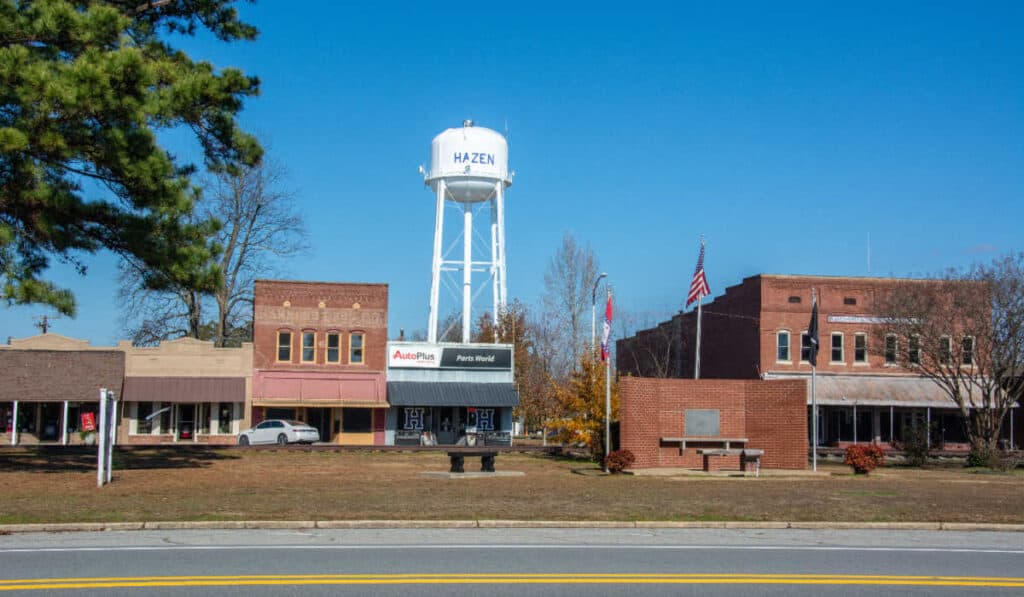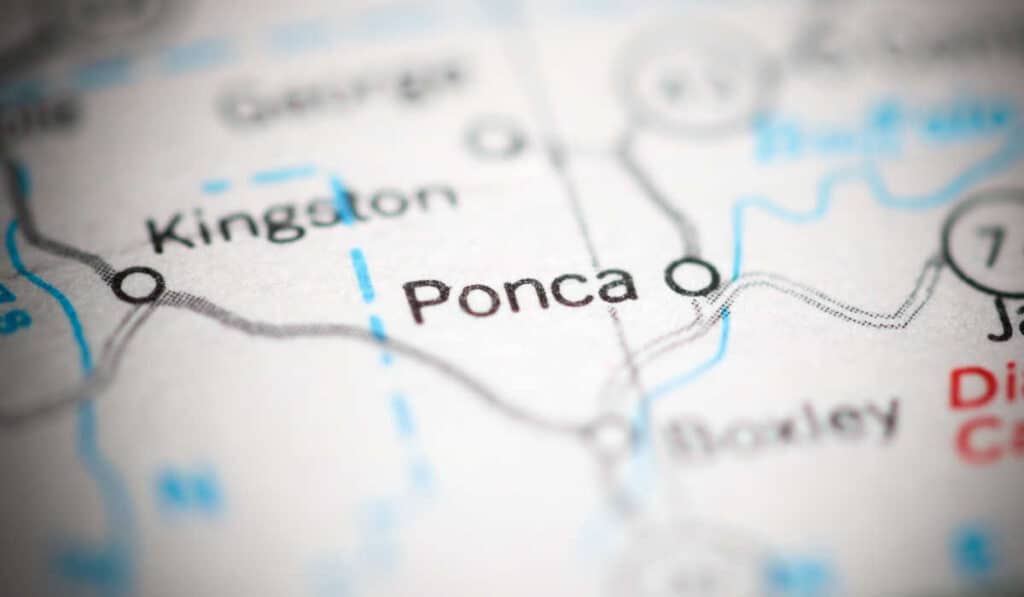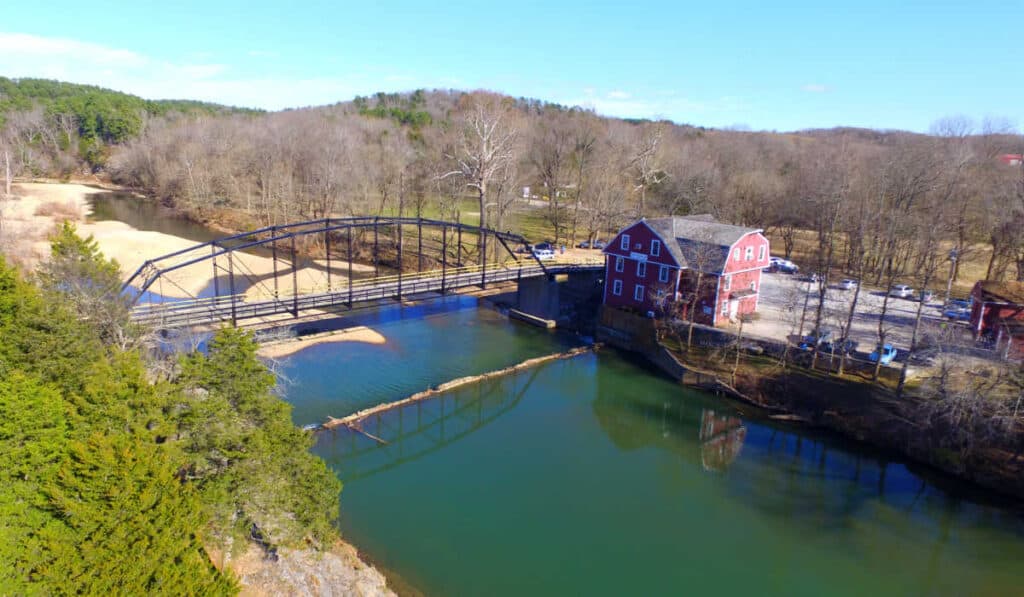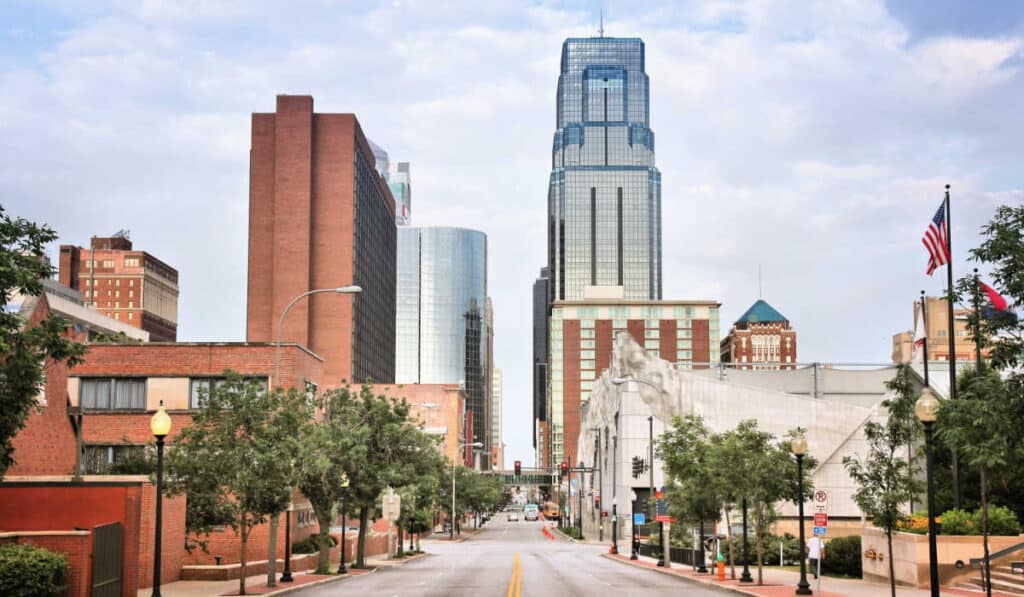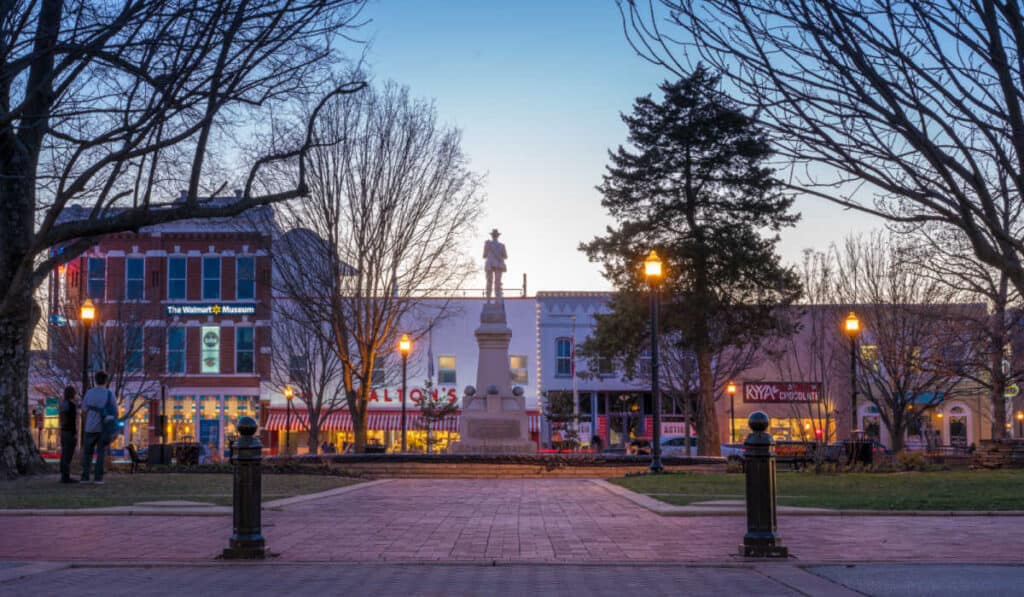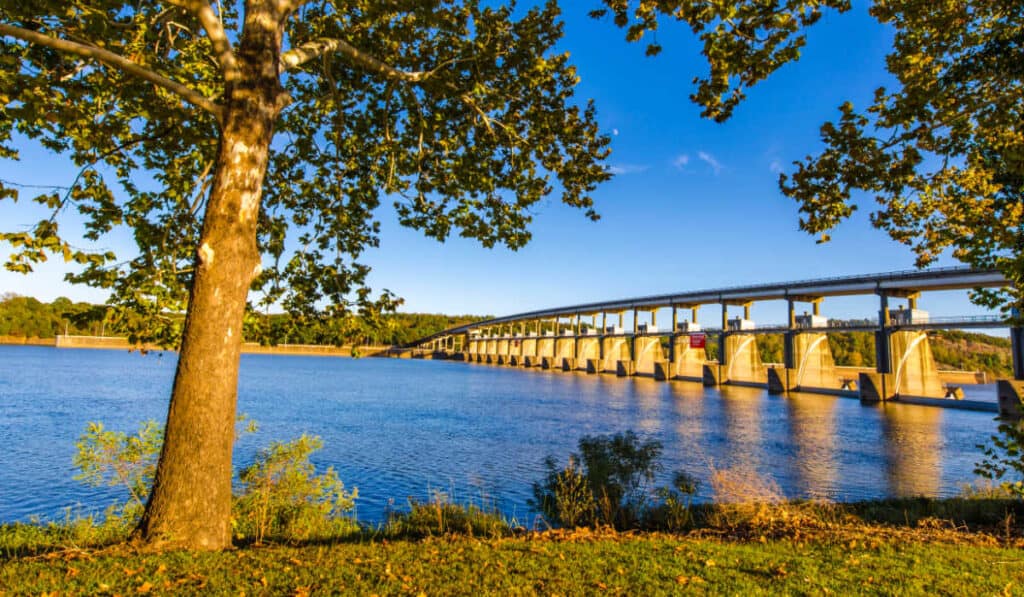Oklahoma City, the capital and largest city of Oklahoma, holds a vital role in Oklahoma’s history and economy. As a hub for oil, cattle, and railroad trade, this vibrant city has experienced significant growth and transformation since its founding in 1889. With its friendly and resilient residents, Oklahoma City has weathered through hardships like the Dust Bowl, the 1995 bombing, and numerous tornadoes, emerging as a thriving metropolis in the Southern United States.
The city also boasts a rich cultural landscape, with a strong connection to country music and an iconic stretch of the historic Route 66 passing through it. Home to a diverse array of attractions, visitors to Oklahoma City can experience a mix of art, sports, history, and recreation. From the impressive Oklahoma City National Memorial and Museum to the wide-spanning parks and recreational spaces, there is no shortage of opportunities for exploration and adventure.
As the heartbeat of the Sooner State, Oklahoma City’s enduring spirit and unique character make it a fascinating destination for both locals and tourists alike. With its blend of historical importance, economic power, and cultural diversity, Oklahoma City continues to be a shining example of what makes Oklahoma distinctive and beloved.
History
Oklahoma City has a rich and storied history that traces its roots back to the late 19th century. Oklahoma City’s history began with the settlement of “unassigned lands” in the region in the 1880s. On April 22, 1889, the Land Run of 1889 took place, marking the opening of these unassigned lands to settlers in what was then known as Indian Territory. Aided by the railroads and the growth of the city as a transportation hub, Oklahoma City quickly emerged as a bustling urban center in the region, eventually becoming the state’s capital in 1910.
During the Land Run of 1889, thousands of settlers—known as “sooners”—rushed to the area in hopes of staking their claim on the land. They were met with competition from other settlers who had arrived ahead of them, leading to a race for the most desirable plots. As the population grew, infrastructure and establishments such as churches, corn mills, grain elevators, and cotton gins were built to support the predominantly agricultural economy.
As the city continued to develop, it drew famous figures such as Will Rogers, who lent his name to the now-iconic Will Rogers World Airport. In the early 20th century, it became apparent that the original capital of Guthrie was struggling to accommodate the growing needs of the state. As a result, Oklahoma City was chosen as the new capital due to its central location and economic prowess.
Throughout the 20th century, Oklahoma City endured several hardships, including the Great Depression and the Dust Bowl, but it persevered and continued to prosper. It became a hub for various industries, from agriculture to oil production. Today, Oklahoma City is a vibrant city that celebrates its unique history, culture, and heritage.
Geography and Climate
Oklahoma City, the capital and largest city of Oklahoma, is located in the Great Plains region of the United States. The city’s topography mainly consists of level plains, with some rugged hills and mountains covered by green forests. This unique combination gives Oklahoma a diverse range of ecosystems, from arid plains to subtropical forests and mountains.
The climate of Oklahoma City can be described as a temperate humid subtropical climate (Köppen: Cfa). This means that the city experiences frequent variations in weather daily and seasonally, with one exception: the consistently hot and humid summer months. During this time, south or south-southeast winds help to temper the heat. On average, Oklahoma City has an annual temperature of 62.0°F. July is the warmest month, with a high of around 93°F, while January is the coldest, with a low of 27°F.
Oklahoma City is also known for its proximity to Tornado Alley, a region in the central United States where tornadoes are most frequent. The city is prone to experiencing tornadoes, particularly during the spring and early summertime when warm, moist air from the Gulf of Mexico combines with cooler, drier air from the Rockies and the Great Plains. This creates ideal conditions for the formation of powerful and destructive storms.
Moreover, Oklahoma City’s climate is influenced by its distance from the Gulf of Mexico and its location on the western edge of the Missouri Plains. This results in a mix of both wet and dry periods throughout the year. Annual precipitation in Oklahoma City typically amounts to around 36 inches of rain and 6 inches of snow. On a brighter note, residents can enjoy an average of 231 sunny days per year, making it one of the sunniest, windiest cities in the United States.
In conclusion, Oklahoma City’s geography and climate are shaped by its location in the Great Plains, proximity to Tornado Alley, and its relationship with the Missouri Plains and the Gulf of Mexico. Its diverse topography and variable climate offer both challenges and opportunities for the people who call this city home.
Economy and Industry
Oklahoma City has a diverse economy, with significant contributions from various industries. The most prominent sector is the oil, natural gas, and petroleum products industry, which has played a vital role in the city’s economic growth. As a bustling center for the energy industry, Oklahoma City is surrounded by an active oil field. In fact, oil derricks can be spotted around the capitol grounds, highlighting the importance of this industry in the local economy.
The agricultural sector is another key player in Oklahoma City’s economy. With an extensive livestock market, the city is considered one of the top cattle trading centers in the world. In addition to cattle, corn and other agricultural commodities are also produced in the region. This strong agricultural presence supports a thriving local food industry and creates employment opportunities for residents.
Transportation has also been an essential part of Oklahoma City’s economic success. The city has a rich history with railroads, which helped connect the city to the rest of the country and facilitated trade and economic growth. Today, the city remains a strategic transportation hub served by major highways and railways.
The aviation and aerospace sector is another major driver for the Oklahoma City economy. Tinker Air Force Base, located in the city’s vicinity, is one of the largest maintenance and repair facilities for the U.S. Department of Defense. Alongside the base, the Mike Monroney Aeronautical Center serves as the Federal Aviation Administration’s (FAA) premier facility for training, research, and logistics. These establishments play a critical role in sustaining Oklahoma City’s economy and providing job opportunities for the local population.
In summary, Oklahoma City’s economy and industry are shaped by its rich energy resources, strong agricultural sector, strategic transportation connections, and significant aviation establishments. The city’s diverse economic landscape contributes to its resilience and success in today’s ever-evolving market.
Demographics
Oklahoma City, the largest city in Oklahoma and the 20th largest in the United States, is located across four counties: Canadian, Cleveland, Oklahoma, and Pottawatomie. As the county seat of Oklahoma County, it is home to a diverse and growing population. In 2023, the city’s population is estimated to be 697,763.
The city’s population is characterized by a rich Native American heritage. Oklahoma is home to 39 indigenous tribal nations, including the Osage, Cherokee, and Pawnee nations. Over 300,000 residents across the state are of Native American descent. This cultural influence is evident in various aspects of Oklahoma City’s life, such as its place names, history, and events.
Oklahoma City is part of the larger Oklahoma City Metropolitan Area, which has a population of approximately 1.4 million people. This metropolitan area is a dynamic and vibrant region that lies at the crossroads of the state’s economic, cultural, and political life.
In Oklahoma County, which has a population of 681,054, the city represents a significant portion of its residents. Ranked as the 46th most populous county in the United States, Oklahoma County is a crucial component of Oklahoma City’s growth and development.
The diverse population of Oklahoma City reflects a mix of cultures, backgrounds, and experiences. The city is known for its friendly, welcoming atmosphere and strong sense of community. As Oklahoma City continues to grow and evolve, it remains a hub for opportunity, education, and culture in the region.
Education
Oklahoma City is home to a diverse and sizable educational sector, encompassing various institutions spanning from primary to higher education. With a focus on both academic and professional development, educational establishments in Oklahoma City are committed to providing students with a comprehensive learning experience.
The city boasts a number of prominent higher education institutions, including Oklahoma City University, the University of Oklahoma College of Medicine, Oklahoma State University – Oklahoma City, Oklahoma City Community College, and Langston University. These universities offer a vast range of programs and degrees catering to the diverse needs of their students, covering various disciplines such as medicine, business, engineering, and the arts.
In addition, Oklahoma City is home to the Oklahoma City Public Schools (OKCPS), a multicultural district serving approximately 34,000 students. The district comprises 33 elementary schools, 12 middle schools, 8 high schools, 4 alternative schools, and 6 charter schools, collectively covering an area of 135.5 square miles in the city’s center. The educational system aims to nurture and prepare its students for a successful future, offering them a broad selection of courses and activities throughout their years within the district.
At the intersection of higher education and workforce development, Oklahoma City offers the CareerTech system. This educational system is designed to bolster specific career skills, catering to individuals looking to enter the workforce directly out of high school or individuals seeking further professional development. The CareerTech system provides residents with a variety of options to obtain crucial skills, from vocational training and industry certifications to adult education and specialized courses for individuals with disabilities.
In summary, Oklahoma City’s educational landscape is vast and diverse, providing students and professionals with a plethora of opportunities to develop academically and professionally. Whether pursuing a higher degree or developing career-specific skills, residents can confidently rely on Oklahoma City’s educational institutions to help them attain their goals.
Arts and Culture
Oklahoma City, the capital of Oklahoma, boasts a vibrant arts and culture scene with a variety of museums, galleries, and performance venues. At the heart of the city’s art scene is the Oklahoma City Museum of Art, which features a range of exhibitions, including the world’s largest collection of Chihuly glassworks. Additionally, the museum organizes various events and educational programs, showcasing the significance of arts and culture in the city.
Another prominent cultural institution is the National Cowboy and Western Heritage Museum. This museum exudes Oklahoma City’s rich history and unique cowboy culture, showcasing an extensive collection of classic and contemporary western artwork, stunning sculptures, and historical artifacts. It also hosts events that celebrate the traditions and heritage of the American West.
For those interested in spending time outdoors while exploring the city’s arts scene, the Paseo Arts District offers a charming and historic area filled with art galleries, studios, and local shops. The district frequently hosts art walks and other special events, truly reflecting the creative spirit of Oklahoma City.
The Oklahoma City Zoo is not only a popular destination for families but also a vital part of the city’s culture. The zoo features a diverse range of animals and conservation efforts, as well as educational programs that encourage visitors to learn and engage with the natural world.
For a unique museum experience, the Museum of Osteology offers an intriguing look at the skeletal structures of various animals. The museum houses an extensive collection of over 300 real animal skeletons, each carefully preserved and displayed to educate and inspire.
In summary, Oklahoma City’s arts and culture scene is a rich blend of history, tradition, and creativity. The city’s numerous museums, galleries, and performance venues provide residents and visitors alike with many opportunities to explore and appreciate the diverse arts and cultural offerings.
Food and Cuisine
Oklahoma City, situated in the heart of the United States, boasts a diverse culinary scene influenced by its Southern roots, proximity to Mexico and Texas, and its unique regional specialties. Oklahoma City is famous for dishes like the Fried Onion Burger, barbecue specialties, and vibrant Mexican cuisine.
The Fried Onion Burger is a classic and iconic dish that originated in the 1920s and remains popular today. It is an all-American dish consisting of a juicy beef patty layered with immense amounts of fried onions, creating an extra crunch that distinguishes it from regular burgers. This mouthwatering dish can be found at various establishments throughout the city, showcasing Oklahoma City’s love for beef.
Oklahoma City’s culinary landscape would not be complete without mentioning its delectable barbecue offerings. With influences from both Texas and the broader Southern regions, Oklahoma City presents mouthwatering smoked meats, tangy sauces, and delicious sides like cornbread and coleslaw. Several BBQ joints in Oklahoma City serve exquisite barbecue dishes that can rival even the best in the nation.
With close proximity to Texas and Mexico, Mexican cuisine is another essential part of the city’s food scene. Oklahoma City is home to a wide range of Mexican restaurants, offering everything from traditional tacos and enchiladas to modern fusion dishes. This diverse spectrum of flavors and ingredients showcases the rich culinary influences the city has embraced.
In addition to these highlights, Oklahoma City’s food scene also includes Southern staples such as chicken-fried steak, grits, and black-eyed peas. These comfort foods serve as the perfect representation of the region’s flavors and cooking techniques.
The food and cuisine in Oklahoma City may be rooted in Southern, Mexican, and Texan influences, but it has evolved into a unique and delicious culinary experience that is sure to satisfy any food lover. So whether you’re indulging in a classic fried onion burger, savoring the mouthwatering barbecue, or enjoying an authentic Mexican meal, Oklahoma City has a rich array of dishes that proudly represent its distinct culinary identity.
Sports and Recreation
Oklahoma City is known for its love of sports and variety of recreational activities. The city is home to the Paycom Center, a large downtown multipurpose arena that hosts concerts, NHL exhibition games, and is main venue for the city’s pro sports teams such as the Oklahoma City Thunder.
Besides basketball, Oklahoma City also has a vibrant baseball scene. The city’s minor league baseball team, the Dodgers, plays their games at Chickasaw Bricktown Ballpark, which is conveniently located in the popular Bricktown district.
For those who enjoy water sports and outdoor activities, Oklahoma City offers numerous lakes for fishing, boating, and other water-based recreational activities. Additionally, the city’s parks and recreation department provides various adult and youth sports programs throughout the year, catering to both individuals and teams.
Another popular location for sports enthusiasts is the State Fair Park, which hosts various events and exhibitions, including horse shows. In fact, Oklahoma City is often referred to as the “Horse Show Capital of the World” due to the large number of equestrian events held in the city.
In conclusion, Oklahoma City is a hotspot for sports and recreation, offering activities and events for locals and visitors alike. From professional basketball and baseball to a vibrant equestrian scene, there is something for everyone in this bustling city.
Tourism and Attractions
Oklahoma City, the capital city of Oklahoma, offers a diverse range of attractions for tourists and visitors. From historical sites to vibrant entertainment districts, there’s something for everyone in this bustling city.
One significant attraction in Oklahoma City is the Oklahoma City National Memorial, which honors the victims, survivors, and rescuers of the 1995 bombing at the Alfred P. Murrah Federal Building. This poignant memorial features a reflecting pool, field of empty chairs, and a survivor tree, each symbolizing different aspects of the tragic event.
For those seeking a lively atmosphere, the Bricktown Entertainment District is a must-visit destination. This revitalized warehouse district is home to various dining, shopping, and entertainment options. Sports enthusiasts can catch a game at one of the many venues, like the Chesapeake Energy Arena, home to the NBA’s Oklahoma City Thunder, or watch the Oklahoma Sooners’ college sports teams.
Visitors can take a relaxing boat ride along the Bricktown Canal, providing a delightful perspective of the surrounding area. The canal runs through the heart of Bricktown, offering guests ample opportunities to explore this vibrant district.
Families with children have several options for fun and education. The Oklahoma City Zoo and Botanical Garden boasts an impressive collection of over 500 animal species, as well as a range of beautiful and exotic plants. The interactive Science Museum Oklahoma is another popular attraction for families, offering hands-on exhibits and activities that entertain and educate.
The Myriad Botanical Gardens provide a serene oasis in the heart of downtown Oklahoma City. These gardens feature an expansive outdoor park and the Crystal Bridge Tropical Conservatory, an impressive structure housing a variety of tropical plants and exotic animals.
Lastly, history buffs can take a trip down the iconic Route 66, which runs through Oklahoma City. This historical highway offers a nostalgic journey through America’s past, with various museums, landmarks, and roadside attractions dotting the route.
Oklahoma City Bombing
The Oklahoma City bombing occurred on April 19, 1995, and was a devastating act of domestic terrorism. A massive homemade bomb, consisting of more than two tonnes of ammonium nitrate fertilizer and fuel oil, was concealed in a rental truck and parked in front of the Alfred P. Murrah Federal Building. The explosion heavily damaged the building, resulting in the loss of 168 lives, including 19 children, and injuring hundreds more.
Timothy McVeigh, the man responsible for the bombing, was convicted and sentenced to death in 1997. He was executed in June 2001. The bombing was, at the time, the deadliest terrorist attack on U.S. soil until it was surpassed by the September 11, 2001 attacks.
The survivors of the Oklahoma City bombing faced numerous challenges in the aftermath of the attack. Many were left dealing with physical and emotional trauma, while others had to cope with the loss of loved ones. The rescue and recovery efforts following the bombing involved numerous agencies and countless volunteers. Rescuers and first responders worked tirelessly to search for survivors and recover the bodies of the victims, often putting their own lives at risk in the process.
In the years after the bombing, Oklahoma City, its citizens, and the rest of the nation came together to remember and honor the victims, as well as support the survivors and their families. The Oklahoma City National Memorial and Museum now stand at the site of the former Murrah Federal Building as a lasting reminder of the attack and its impact on those affected.
The Oklahoma City bombing serves as a stark reminder of the dangers of domestic terrorism and the importance of community resilience and preparedness.


